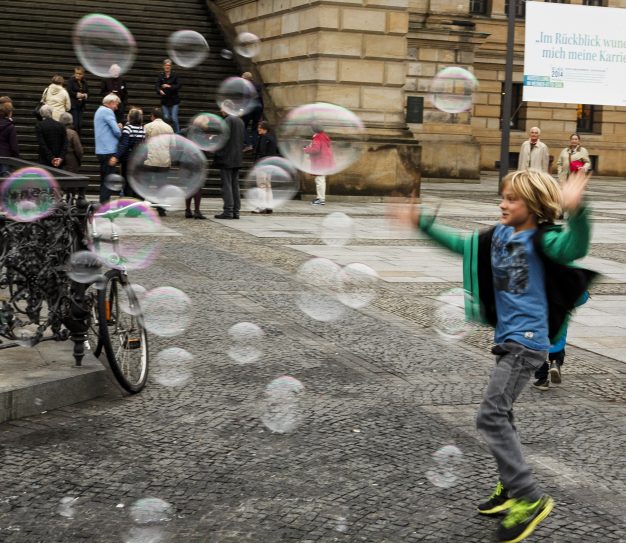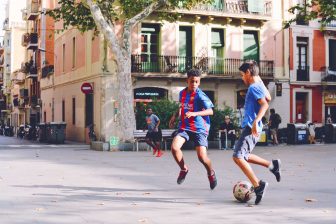We need to take play seriously. We need to take play seriously because it can help us tackle some of the serious problems our society is suffering. Children’s health is in crisis. We have rising diabetes, obesity and depression. It is a fact that children in England are the least fit they have ever been.
Play in nature teaches children a love of the environment that will never leave them. It is one way we can guarantee that the next generation of adults care about landscape, ecology and wildlife. Combined with green infrastructure, a play area can not only make people more resilient, it can make the city more resilient too.
Unstructured play can do more for health than organised sport and active video games. It can reduce depression and increase creativity. It’s how we learn about the world. Play can also bring communities together. Seeing children play outside increases perceptions of safety and wellbeing. Parents mix at the playground, children socialise and get to know each other.
Freedom to roam
Yet play is decreasing and children’s services are disproportionately cut. We’re scared to let children play outside due to the very real dangers of traffic, and the (mostly) media-generated threat of ‘stranger danger’. This is exacerbated by a growing intolerance, criminalisation even of children in the public realm. The area in which children are free to roam has decreased in the last few decades by 90%. What are we doing with that last precious 10%?

By experiencing risk and overcoming challenges through play we learn to look after ourselves; but we have become risk averse, both as parents and designers. Many playgrounds don’t provide a sense of challenge or excitement – to avoid overblown fears of litigation. The average playground is a sterile, segregated yard of equipment, isolated from the community it’s supposed to serve; patronising to its intended users and built predominately for safety. And for some children, these are the only places they’re ever permitted to play.
We want healthy cities, happy communities and a green future. Play can deliver these. Children have no voice and are often poorly misrepresented by those who do, so cities need to change, welcoming children rather than pushing them out.
Not just swings and slides
Play exists in every medium, not just swings and slides but natural elements like rocks and topography. In fact it can happen anywhere, and should. It can bring coherence to a design and give neighbourhoods character. We should think about play as we do any other network running through the city.
Most importantly, play is fun. It is how we enjoy ourselves here in the present moment, and that is something we should be taking very seriously indeed. And remember – play is for all ages, not just children.
I believe play should become a central part of how we design, and how the different specialisms contribute to a project. Lighting can be playful, for instance. Materials and façades can be playful.
It’s time to play.
Samuel Williams
Originally published on thoughts.arup.com





